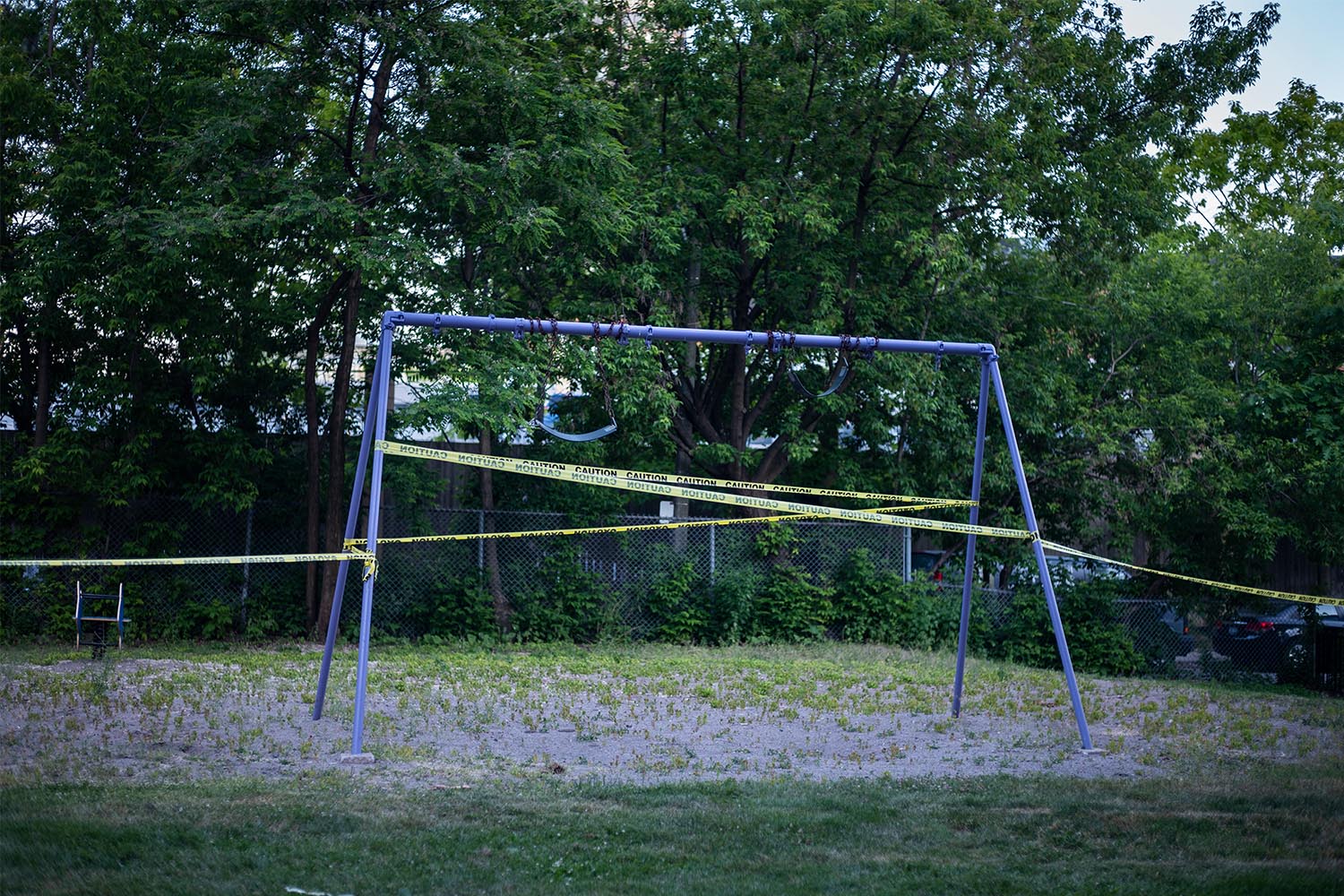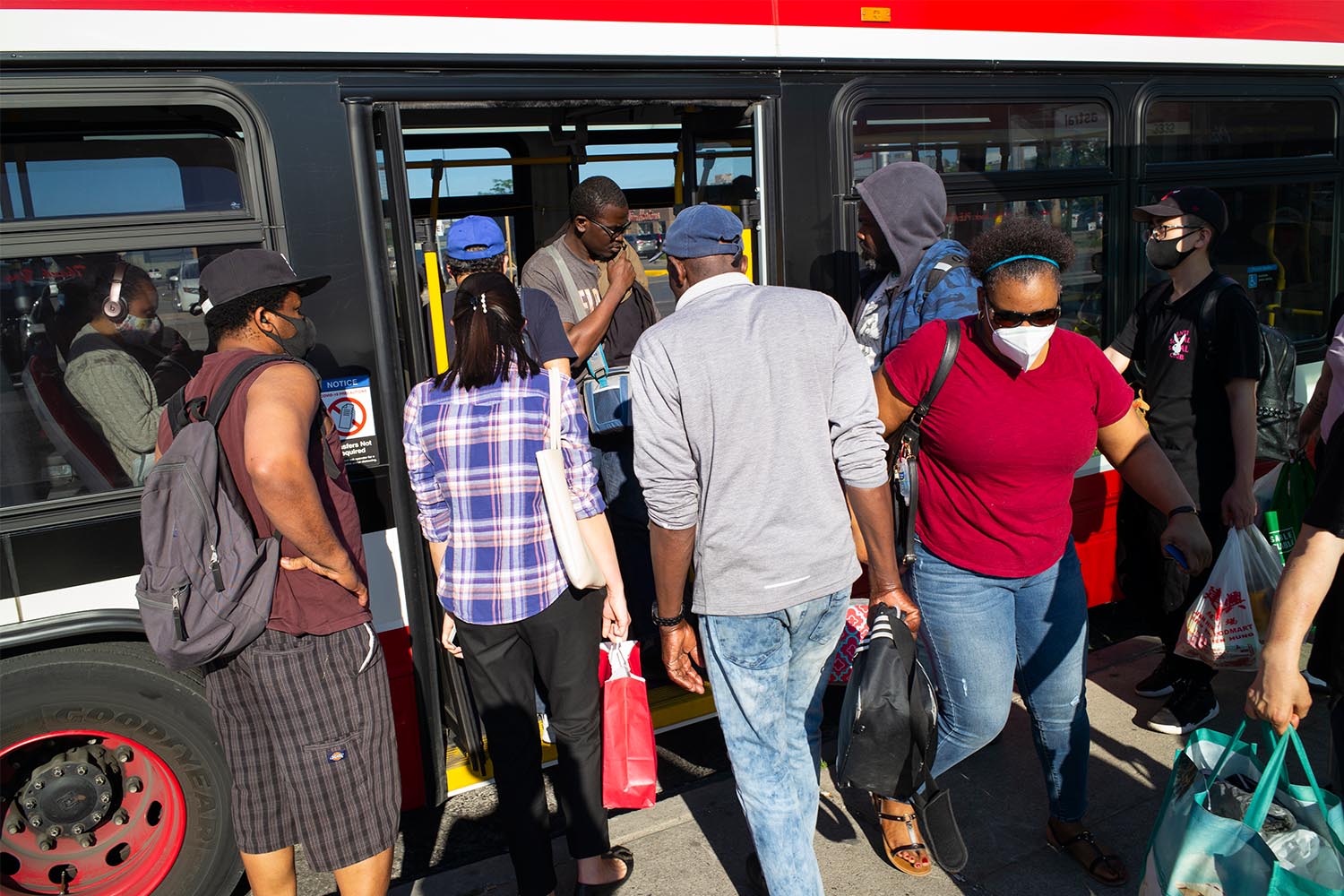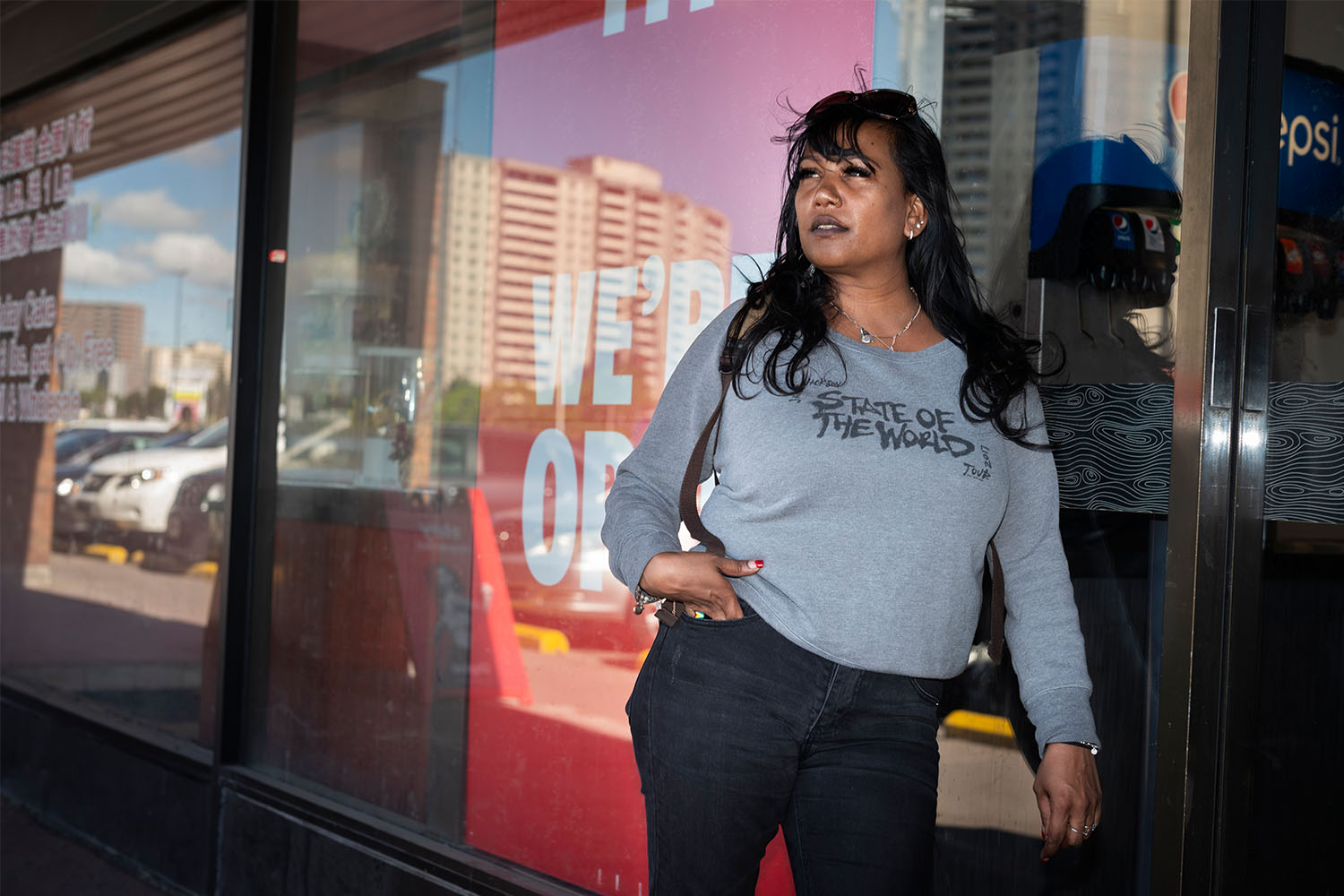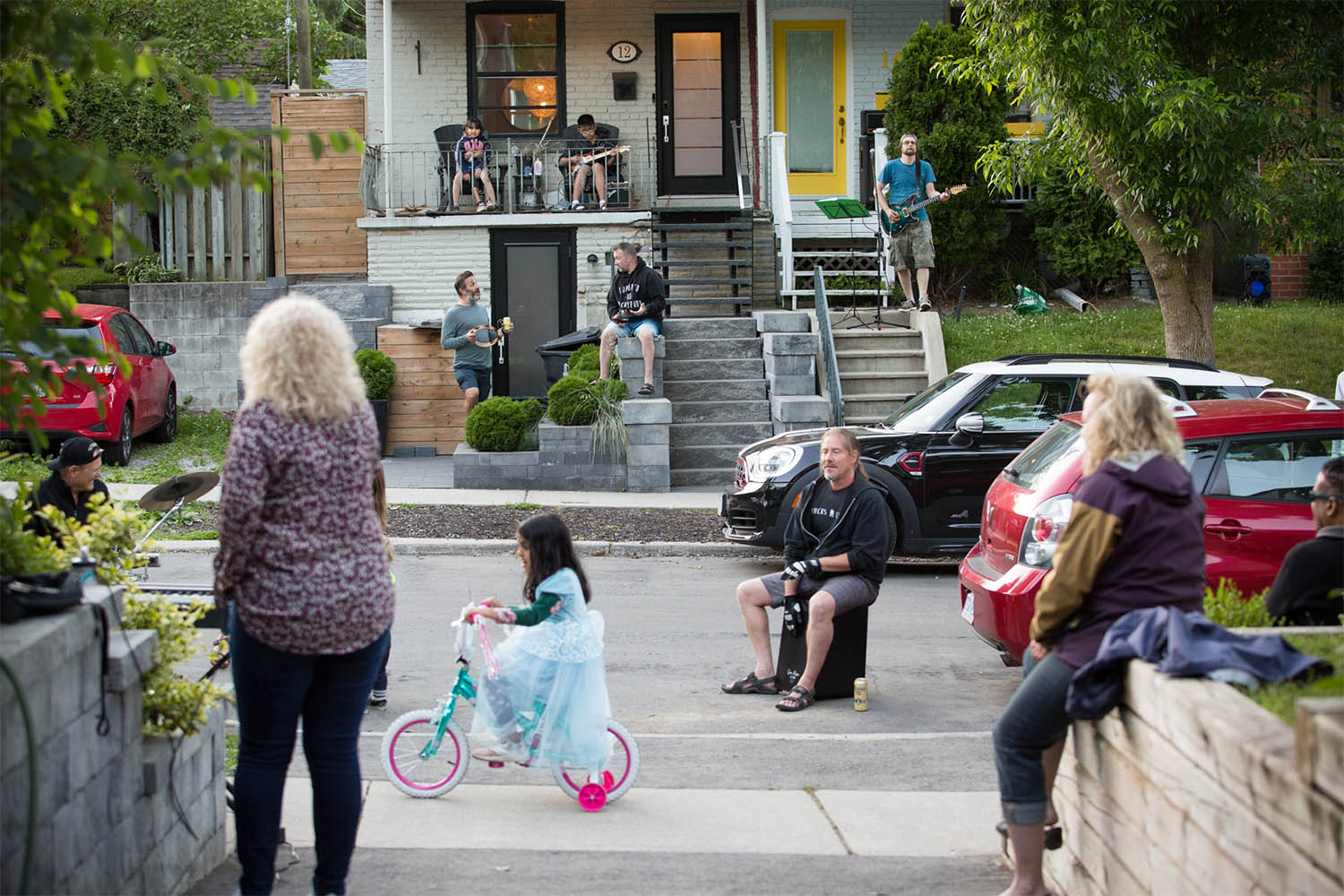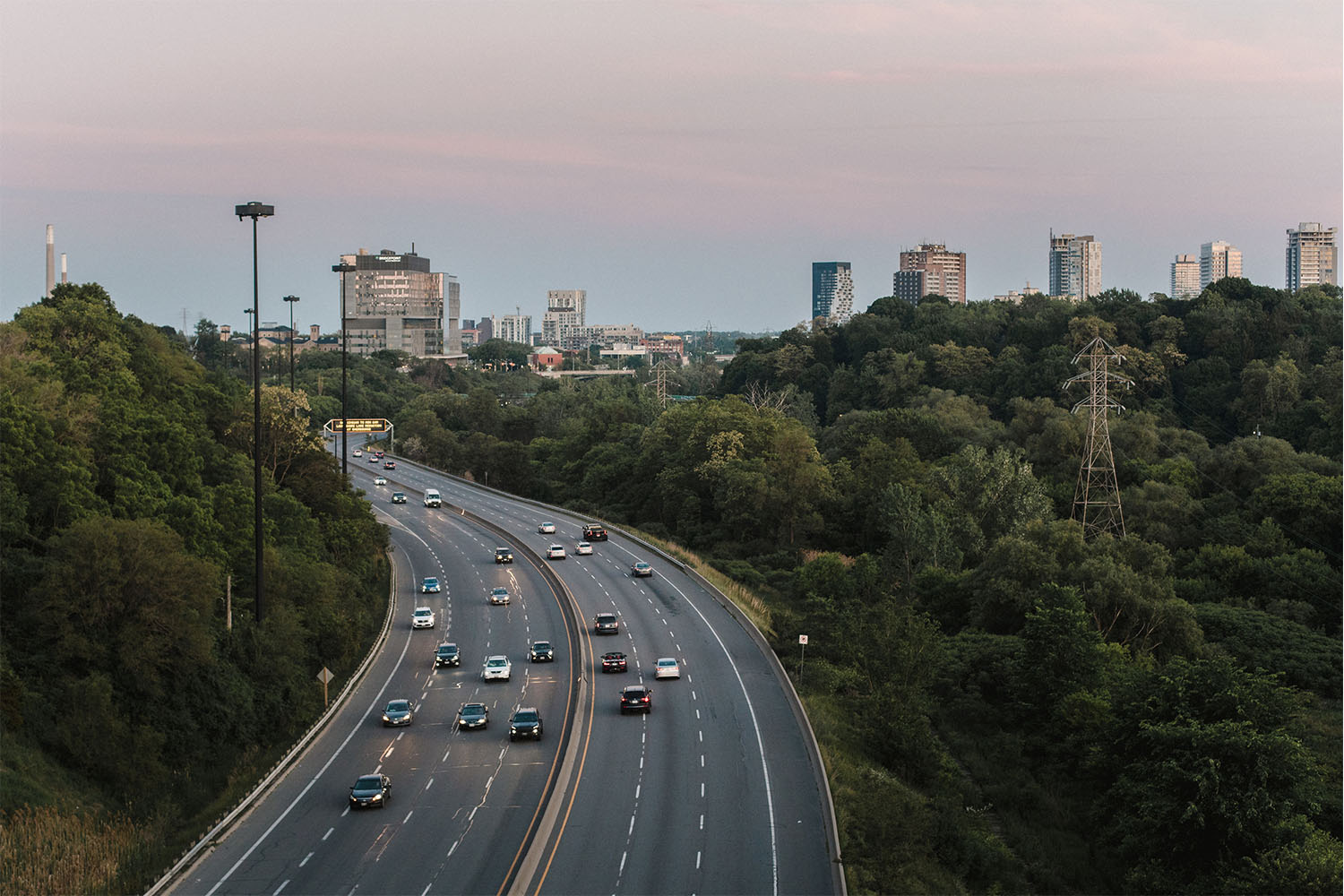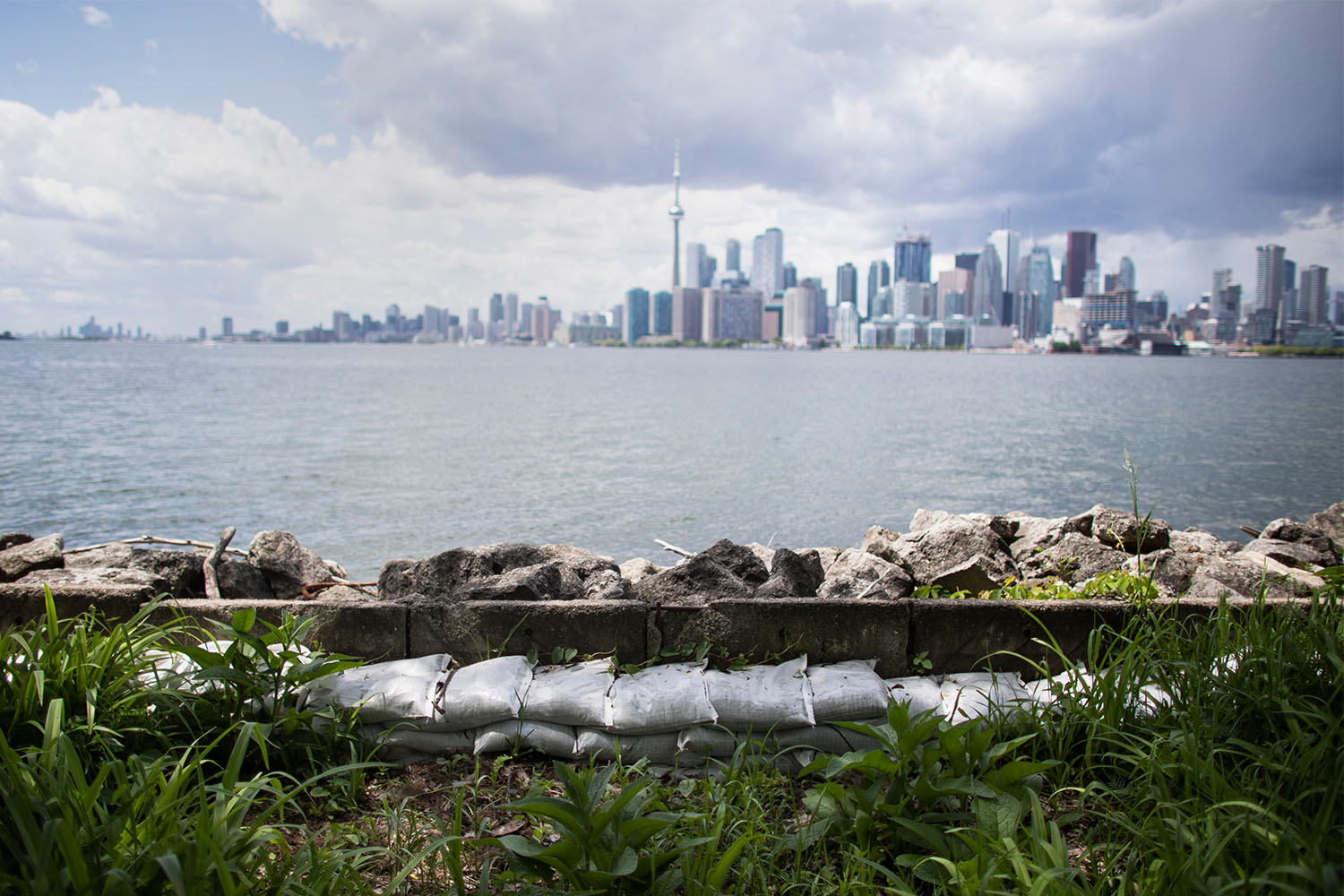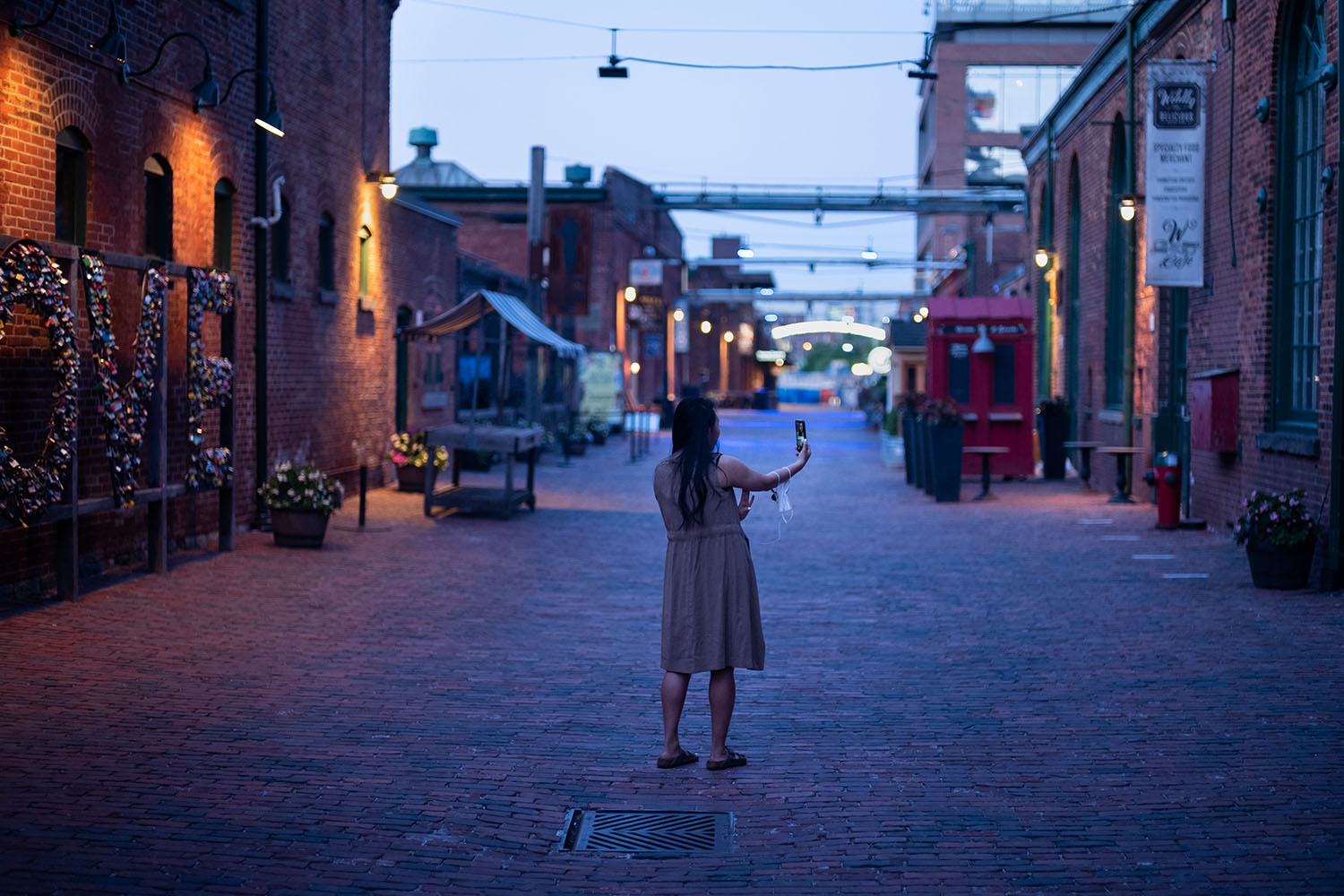
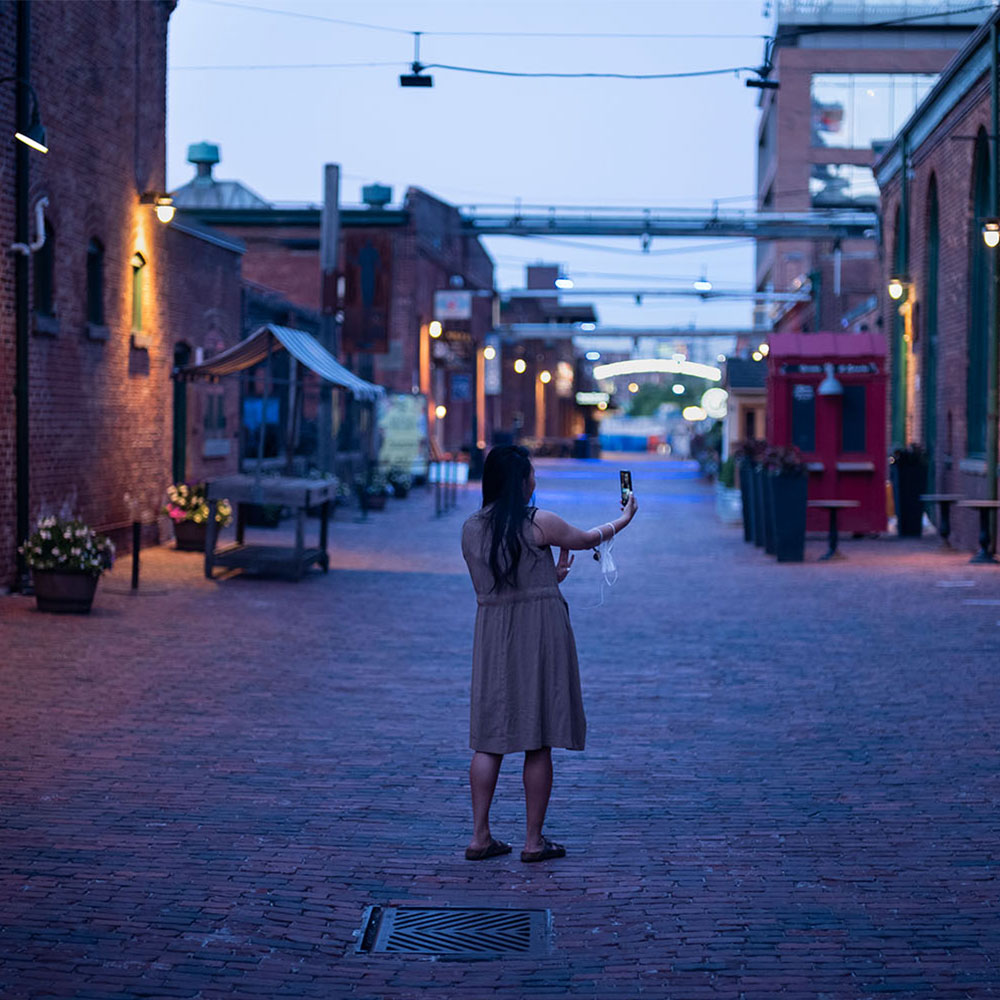
The Distillery District is quiet. The normally crowded brick streets of the Victorian industrial landscape, repurposed as an arts and entertainment destination, have been nearly empty during the pandemic. Save for the residents who live in the newer condo towers, the few outside pedestrians that venture in have the place to themselves, their footsteps echoing off the buildings in the conspicuous hush.
“It’s kind of spooky,” says Aaron Binder of the Distillery District. “I was just down on the weekend and I think I might have seen twenty people, while this time last year you would have seen probably two or three thousand in the hour that I was there. It’s a pretty massive drop in traffic.”
Binder is the president of the Corktown Residents and Business Association and a partner at Go Tours Canada, a company that runs Segway tours of the Distillery District and other parts of Toronto. The company has been around for 15 years and was making plans to expand. But when the COVID pandemic began, it had to lay off its ten employees. The student jobs that are usually added in the summer evaporated as well. “It’s bleak, if I can be completely honest,” says Binder.
Toronto’s tourist economy often goes unnoticed, but the way it touches so many parts of the city is felt more profoundly now that it’s gone. “In most cases, [proprietors] may not even be aware of how much tourism impacts on their business,” says Troy Young, CEO of Attractions Ontario. “I’ve seen figures that approximately 20 percent of a restaurant’s business is due to tourism, but most wouldn’t consider themselves in tourism.” Tourism is the fifth largest industry in Canada, employing ten percent of the country’s workforce and it’s the largest employer of youth. In Ontario, tourism is bigger than the forestry, mining and agricultural industries combined, and has an average wage higher than manufacturing. “Because they are mainly small businesses, they do not get the same level of support and interest from politicians than, say, manufacturing or agriculture gets,” says Young.
A 2019 study commissioned by Tourism Toronto says the city itself sees 27.5 million visitors a year who support $10.3 billion in economic activity. These figures put to rest any lingering doubts that Toronto is a major tourist draw; Barcelona, before starting counter-tourism measures to reduce the effects of overtourism, attracted around 30 million tourists a year. Toronto is a sleeper city for tourism, and the hidden impacts can be found everywhere, even if the cynics here and elsewhere might wonder: “Why would anybody want to go to Toronto?”
While many parts of Toronto have seen local foot traffic dramatically reduced, the Distillery is one of the places where tourism is most visible as a major economic force. After the Gooderham and Worts Distillery ceased production in the early 1990s, the site was largely unused save for the occasional film shoot. The streets around the site were more post-industrial rustbelt than Victorian, with unkempt tall grass and tractor trailers parked along the empty streets. Over the last twenty years, the area has changed radically. The Distillery reopened in 2003 with a carefully selected list of tenants that avoided big corporate chains. A leap of faith, it was difficult to attract visitors during the first years; even though it was just a handful of blocks from St. Lawrence Market, it was just a little too far from the well-travelled parts of downtown. Since then, the neighbourhood around it has been built up with residential and commercial construction, including the Canary District and the Corktown Common park. Just as the city had finally arrived at the Distillery’s doorstep and Corktown’s retail strip was coming together, the coronavirus hit it hard.
“Ultimately, we’re an experience, right?” says Stephanie Duong, a pastry chef and co-owner of Roselle Desserts on King Street East, a few blocks from the Distillery in the heart of Corktown. “You come in and we want you to sit down, have a tea, enjoy our quaint little shop and socialize with everyone else.” Just a year since opening, Duong says they’ve had to lay off all ten of their employees and have only been able to bring back one as they operate as a “pop-up” operation where customers order and pay for their treats days in advance and pick them up at a scheduled time. Nearly all businesses are suffering now, but the idea of selling an “experience” is key to understanding why the challenges to tourism are unique: it isn’t just about a physical product.
Though it might not dominate Toronto the way the automotive industry does Windsor, tourism is like an octopus, with variously-sized suction cups clamping on to different parts of the city.
SOMA Chocolate is another long-time tenant of the Distillery. Founded there in 2003, it’s the original of their three current locations. Co-founder Cynthia Leung says after taking special precautions and changing the way they work, they’ve been able to bring back six of their fifty workers and operate out of their Brock Avenue production facility, even making porch deliveries themselves. “We’re totally part of the tourism industry,” she says, estimating about 25 percent of their customers are tourists, with the majority of them frequenting the Distillery location. “We did tours there, booked through hotels or social media. People would email us telling us that they were going to take a trip to Toronto and wanted to take a tour of the chocolate factory as part of their other tourism activities. It was a big part of the Distillery and having worked there many Saturdays it was delightful to be able to meet all these people from all over the world.” Because the Distillery location was so heavily dependent on tourism, Leung expects it will be their last site to reopen.
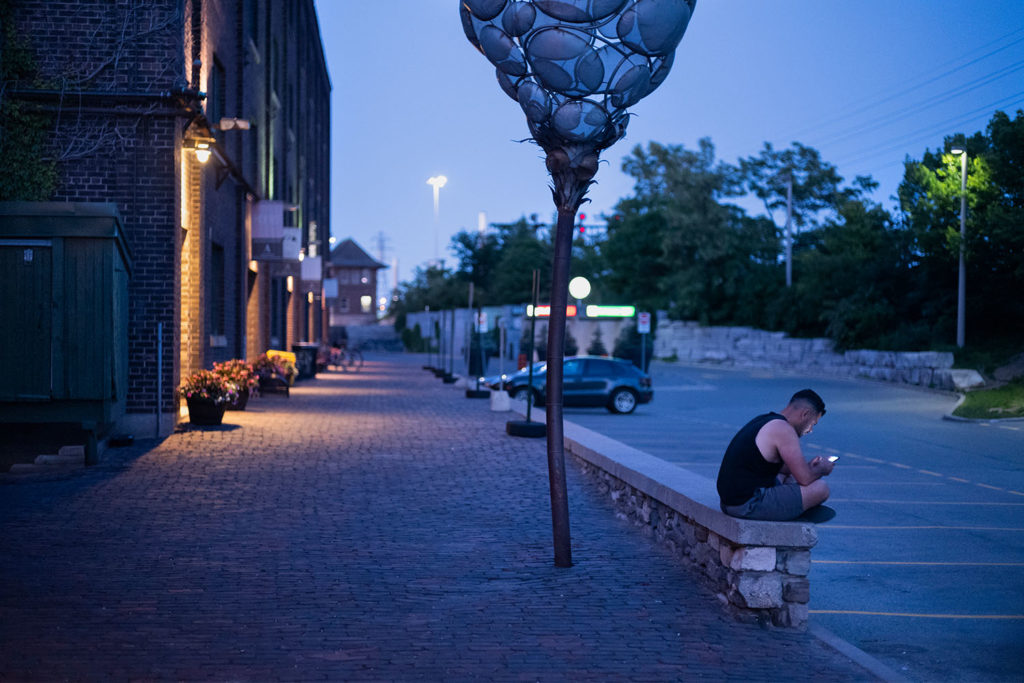
At Soulpepper theatre nearby, the numbers are in line with the Attractions Ontario data, with about five percent of patrons coming from the US and nine percent from Canada outside of Toronto. “I think we’re all extremely clear that the live performance sector is going to be one of the last to come back to any kind of life as we remember it,” says Executive Director Emma Stenning. The company has been forced to cancel their season, the first with artistic director Weyni Mengesha, and the spinoff effects on local employment are profound. As a local tourism draw, those theatregoers also frequent shops and restaurants nearby. And in addition to permanent staff, a single production can employ one to twenty actors, two or three stage managers, a director, a supporting team of freelance coaches like fight choreographers, sound and lighting designers, set builders, prop makers, dressers, ticket takers, and even café staff. “Any one show can have in the region of 30 people working on it,” says Stenning. “All of who have, in this instance and with huge sadness and regret, been laid off.”
Though it might not dominate Toronto the way the automotive industry does Windsor or Oshawa, tourism is like an octopus, with variously-sized suction cups clamping on to different parts of the city. Many of the creatives who might work in theatre or elsewhere rely on service industry jobs that are part of the tourist economy. Just across the Don River from Corktown, the recently revamped and reopened Broadview Hotel has brought an established aspect of the tourism industry to this part of town. “This industry is so important for our community,” says Sarah Tauriello, a fine-dining server who also led a recent successful push to unionize the Broadview. “There are a lot of artists and gig workers who rely on this work between other gigs and contracts, there are people who support families, and new immigrants to the country.”
The relationship between tourism and the creative economy is complex and interconnected, but it’s also a fulfilling and viable career on its own for many people. Vinu Jose came to Canada from India nine years ago to study hospitality at Georgian College in Barrie. He’s been in Toronto for about five years and works events at both the Broadview and Hotel X, while his wife works at the St. Regis hotel. Both are laid off and anxious to get back to work, but since his job relies on large crowds, he too expects to be one of the last to go back to normal. “I spent a lot of my life on this,” says Jose. “We’ve made all our plans around these jobs, staying downtown because of it. I really hope they find a vaccine. If nothing works, I’m even thinking of going back home. It’s not a good time at all.”
While the streets of the Distillery area are spooky now, spookier still is the way the effects of a devastated tourism industry ripple out like the waves of a tsunami, causing widespread damage wherever they land. It’s tough for most businesses right now, but those that rely on the tourist trade, even partially, are even more profoundly affected. A summer of road trips and of being a tourist in your own city may help, but in this city of tight margins and high costs of living, tourism is the integral economic force that helped make it possible for so many to survive.

